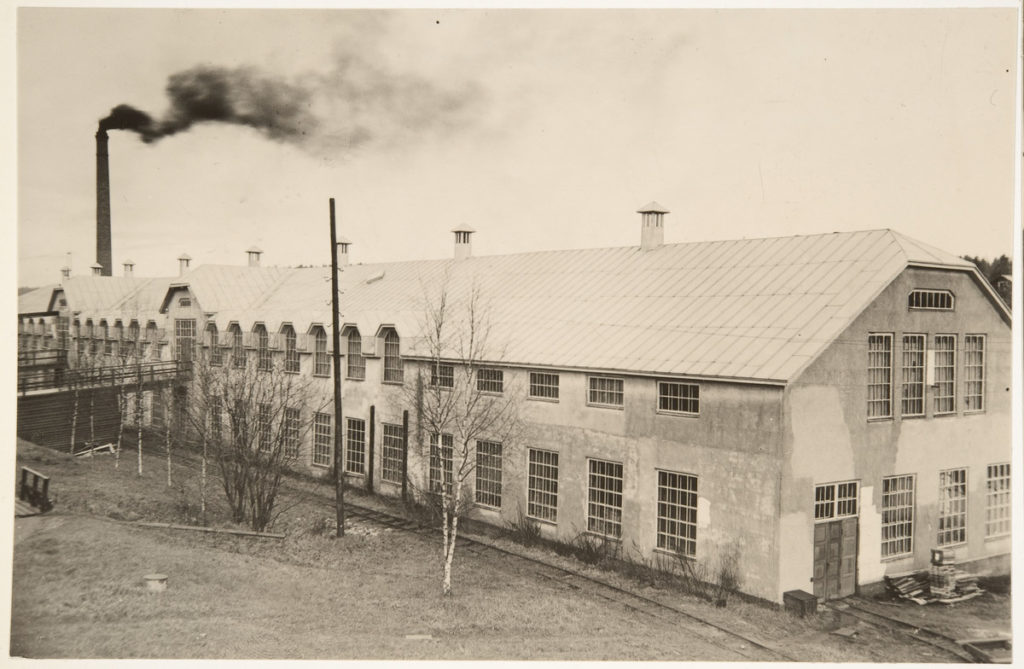
Billnäs is part of the historic ironworks area of southwestern Finland and is the third oldest in Finland, Rautaruukki. Billnäs Ruukki was founded in 1641 by Carl Billsten with the permission of the Swedish krona. The historic Kuninkaantie runs through Ruukki's Mustionjoki River and the other bank of the river. In the heart of the ironworks area, industrial activity largely ceased in the 1980s. Today, the area is owned by Billnäsin Ruukki Oy. The company is developing the area into a center for tourism, events and teleworking, respecting history.
Billnäsin Ruukki
Founding of Ruukki
Vuonna 1641 Carl Billsten sai Ruotsin kruunulta oikeuden perustaa rautaruukin Billnäsiin, joka on Suomen kolmanneksi vanhin rautaruukki. Vuorimestari ja ruukinpatruuna Billstenin toimet ovat vaikuttaneet merkittävästi Suomen teollisen historian syntyyn. Hän perusti myös Fagervikin ruukin 1646 ja hänen poikansa Carl Billsten nuorempi perusti Skogbyn ruukin 1682. Nämä ruukit olivat Billstenin suvun omistuksessa 1720-luvulle, jonka jälkeen ne siirtyivät tukholmalaisten kauppiaiden Johan ja Mikael Hisingin omistukseen.
Billnäs on osa Lounais-Suomen historiallista ruukkialuetta, johon kuuluu lähes parikymmentä merkittävää ruukkipaikkakuntaa. Ruukin läpi virtaava Mustionjoki päättyy muutaman kilometrin päässä sijaitsevaan Pohjankurun satamaan, josta tuotteet vietiin maailmalle. Joen toista rantaa kulkee historiallinen Kuninkaantie. Helsingistä Turkuun kulkeva rautatie kulki aina v. 1991 ruukin läpi. Billnäsistä joka suuntaan avautuva historiallinen teollisuusmaisema kuuluu Suomen merkittävimpiin rakennettuihin kulttuuriympäristöihin.
Ruukki's prosperity
Vuonna 1883 Hisingerin aateloituneen omistajasuku jakoi kolme ruukkia perillisten kesken. Billnäsin omistajaksi tuli nuorin veljeksistä, Fridolf Leopold Hisinger. Hän uudisti raudanvalmistusyrityksen ja teki siitä modernin teollisuusyrityksen tunnettuine kuluttajatuotteineen, kuten kirveet, vasarat ja tammiset toimistopöydät. 1900-luvun alkuvuosina Billnäsissä työskenteli runsaat 1 000 henkilöä. Nimikirjaimet FLH näkyvät yhä monien ruukin rakennusten seinäkoristeissa. Rakennusten julkisivuilta voit myös löytää toisen kirjainsarjan, BBAB. Hisinger nimittäin muodosti ruukista osakeyhtiön 1898. Fiskars hankki Billnäsin osake-enemmistön 1920 mutta Billnäs jatkoi menestyvää toimintaansa omana yksikkönä ja tuotemerkkinä. Ruukkialueen ytimessä teollinen toiminta lakkasi suuremmaksi osaksi 1980-luvulla, jolloin ruukki siirtyi silloisen Pohjan kunnan omistukseen.
New times
Alueen keskeinen rakennuskanta, yhteensä n. 30 rakennusta, siirtyi 2008 yksityisen Billnäsin Ruukki Oy:n omistukseen. Yhtiö kehittää aluetta hotellija ravintolatoiminnan sekä tapahtumien ja etätyöskentelyn keskukseksi, historiaa kunnioittaen. Kaikki alueen rakennukset ovat saaneet nykyisen muotonsa FLH:n ajalta 1800-luvun lopulta 1920-luvulle. Kulttuurimaisemaan kuuluva piippu korjattiin vuonna 2011.
Swedish great power
Billnäsin ruukin perustamisen aikaan 1640-luvulla Ruotsi – ja Suomi sen osana – oli pohjois-Eurooppalainen suurvalta. Ruotsi kuului 1600-luvulla Euroopan merkittävimpiin raudantuottajiin, ja vuoriteollisuus muodosti valtakunnan taloudellisen selkärangan. Kruunu tuki verohelpotuksin uusien rautaruukkien perustamista ja houkutteli ulkomaista osaamista ja pääomaa pohjoiseen. Myös Länsi-Uusimaasta tuli osa Ruotsin kasvavaa teollisuusmaisemaa, joka täyttyi masuuneista, vasarapajoista, miiluista, louhoksista ja kaivoksista.
Billsten establishes Ruukki
Ruukkien perustamiseen tarvittiin pääomaa ja rohkeita yrittäjiä. Tällainen oli Tukholmassa 1605 varakkaaseen perheeseen syntynyt saksalaistaustainen Carl Billsten. Nuoruusvuosien jälkeen hän asettui Ruotsin toiseksi suurimpaan kaupunkiin Turkuun, jossa hän loi suuren omaisuuden ennen siirtymistään vuoriteollisuuden pariin. Ruukille sopivan paikan hän löysi Mustionjoen kosken partaalta, paikalta nimeltä Skavistad. Ruukki aloitti toimintansa 1641 ja paikka nimettiin omistajansa mukaan Billnäsiksi. Masuuni rakennettiin noin kilometri yläjuoksulle, Maasillan kosken lähettyville. Vuonna 1646 Billsten laajensi toimintaansa ja perusti ruukin Fagervikiin, joka kehittyi Billnäsiä suuremmaksi ruukiksi. Billnäsin ruukkiin kuului alussa masuunin lisäksi kaksi kankivasarapajaa ja nippupaja. Masuunissa tuotettiin takkirautaa ja kankivasarat takoivat siitä ruukkien päätuotetta eli kankirautaa. Pajoissa raudasta valmistettiin myös käyttötuotteita kuten nauloja ja työkaluja. Kaikkiin työvaiheisiin tarvittiin suuria määriä vesivoimaa ja puuhiiltä. Aluksi rautamalmi louhittiin Lohjan Ojamon kaivoksesta. Kaivos ei kuitenkaan tuottanut tarpeeksi hyvälaatuista malmia, joten sitä ryhdyttiin tuomaan Tukholman saariston Utön kaivoksista. Carl Billsten oli ensimmäinen ruukinpatruuna, joka asettui asumaan omistamilleen ruukeille. Billnäsin ensimmäinen päärakennus sijaitsi nykyisen isännöitsijän talon paikalla. Rakennusta vastapäätä, Kuninkaantien pohjoispuolella, sijaitsi Billstenin perustama puutarha. Samalla paikalla on vieläkin puutarha.
Ironworks landscape
Alueen halki virtaa Mustionjoki, joka saa alkunsa Lohjanjärvestä ja kulkee Mustion ruukin ja Karjaan kautta Pohjanpitäjänlahteen. Lähellä kulkee myös Turun ja Viipurin välinen historiallinen Suuri rantatie eli Kuninkaantie. Aluksi ruukki sijaitsi joen pohjoispuolella, mutta laajeni joen vastakkaiselle rannalle 1700-luvulla. Billnäsin kohdalla joki muodostaa 6 metrin pudotuksen, mikä teki paikasta täydellisen ruukin perustamista varten. Koskesta vettä ohjattiin vesiränneihin, jotka pyörittivät myllyjä ja vasarapajoja. Villinä kuohuva koski padottiin 1921, jolloin myös voimalaitos valmistui.
The time of the Hisingers
Suuri Pohjan sota (1700–1721) oli tuhoisaa aikaa Länsi-Uudellemaalle ja sen ruukeille. Vuonna 1723 tukholmalaiset veljekset Johan ja Mikael Hising ostivat sodassa tuhoutuneet Billnäsin, Fagervikin ja Skogbyn ruukit, jotka Carl Billsten ja hänen poikansa olivat perustaneet 1600-luvulla. Raunioitunut Billnäsin ruukki kunnostettiin viidessä vuodessa. Mikael Hisingin pojasta Johanista tuli ruukkien omistaja 1756. Hänen aikanaan ruukit kukoistivat ja tuottivat suuria voittoja. Johan Hising aateloitiin 1770 nimellä Hisinger. Vuonna 1738 Billnäsin ruukki laajeni joen eteläpuolelle, jonne perustettiin uusi kankivasarapaja. Vanhempi kankivasarapaja sijaitsi paikassa, jossa seisot. Pajan vieressä sijaitsi neljä hiilivarastoa, joihin maantieltä vei jyrkät sillat. Maantien ja kallioseinämän väliin rakennettiin työläisten ja seppien asuntoja. Vähän matkan päässä sijaitsi ruukin päärakennus, tallit ja puodit. Vanhin osa ruukkia sijaitsi siis joen tällä puolella.
Big fire
Billnäsin apuseppä Johan Timper oli 10. elokuuta 1775 vahtivuorossa. Kello 11 aamupäivällä hän huomasi tulen päässeen valloilleen yhdessä hiilivarastoista. Vasarapajasta lentänyt kipinä oli sytyttänyt katon. Ruukinjohtaja Johan Nordberg kutsuttiin paikalle ja 16 miestä yritti turhaan saada paloa sammumaan. Ruukin koko pohjoispuoli – kankivasara, myllyrakennus, hiilivarastot, ruukin päärakennus ja ruukinpuoti – tuhoutui. Jopa puistotie ja puutarha paloivat. Vain kaksi Lippukallion laella sijainnutta taloa säilyi. Saman kesän aikana tuli oli tehnyt tuhojaan myös Hisingerin pääruukissa Fagervikissa. Tuhon jälkeen mylly, hiilivarasto, asunnot ja vasarapajat jouduttiin rakentamaan uudestaan. Johan Hisingerin nimikirjaimet ja rakennusvuodet ovat nähtävissä suuren makasiinin (1778) ja kankirautamakasiinin (1788) ulkoseinissä. Hisinger rakensi palon jälkeen joen yli leveän maantiesillan sekä tien, joka yhdisti ruukin Tammisaaren maantiehen.
Another disaster
Syksyllä 1782, seitsemän vuotta suuren tulipalon jälkeen, Billnäsin ruukkia koetteli suuri tulva. Vesi jäätyi alemman padon kohdalla, jolloin veden pinta alkoi nousta. Pian vesi ulottui jo 3,5 metriä normaalia korkeammalle peittäen lähes kokonaan joen rannalla sijainneet rakennukset. Vielä pahempaa seuraisi. Inrikes Tidningar-lehti kirjoitti, kuinka 1. joulukuuta klo 6 illalla vesimassat murtautuivat jäävallin läpi kauhealla paukkeella ja maanjäristyksen tavoin heittivät ilmaan suuria maa- ja jäälohkareita, pirstoivat vesirännit palasiksi ja silpoivat myllynovet säpäleiksi. Osa Helsingin ja Turun välistä maantietä tuhoutui. Luonnonvoimat veivät mennessään valtavan maamassan ja loivat hetkessä 120 metriä pitkän, 80 metriä leveän ja 18 metriä syvän kaivannon, joka näkyy selvästi tänäkin päivänä joen ja maantien välissä.

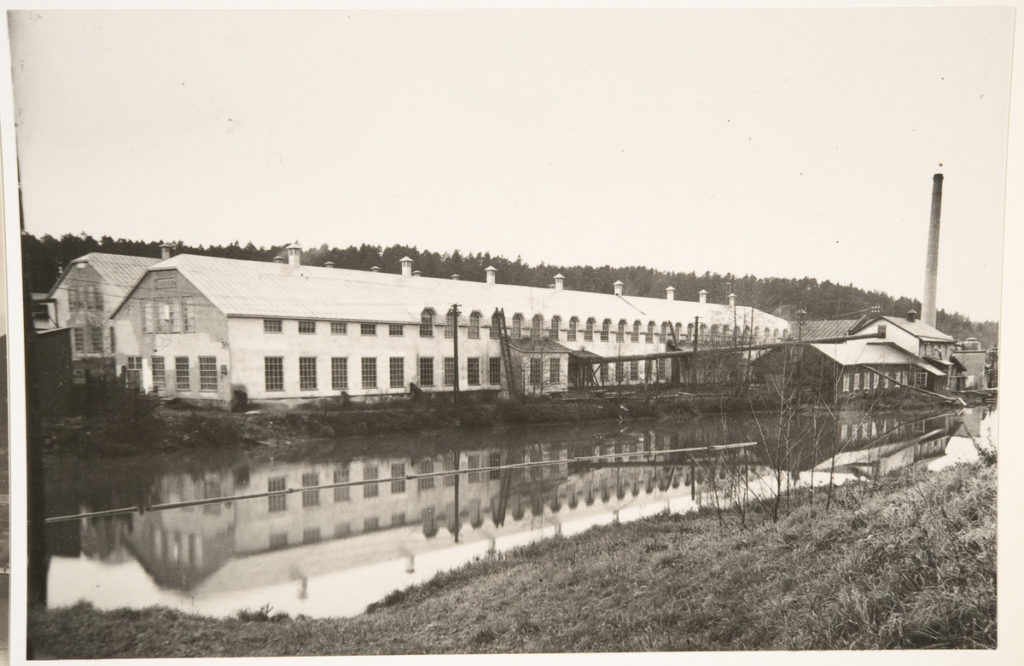
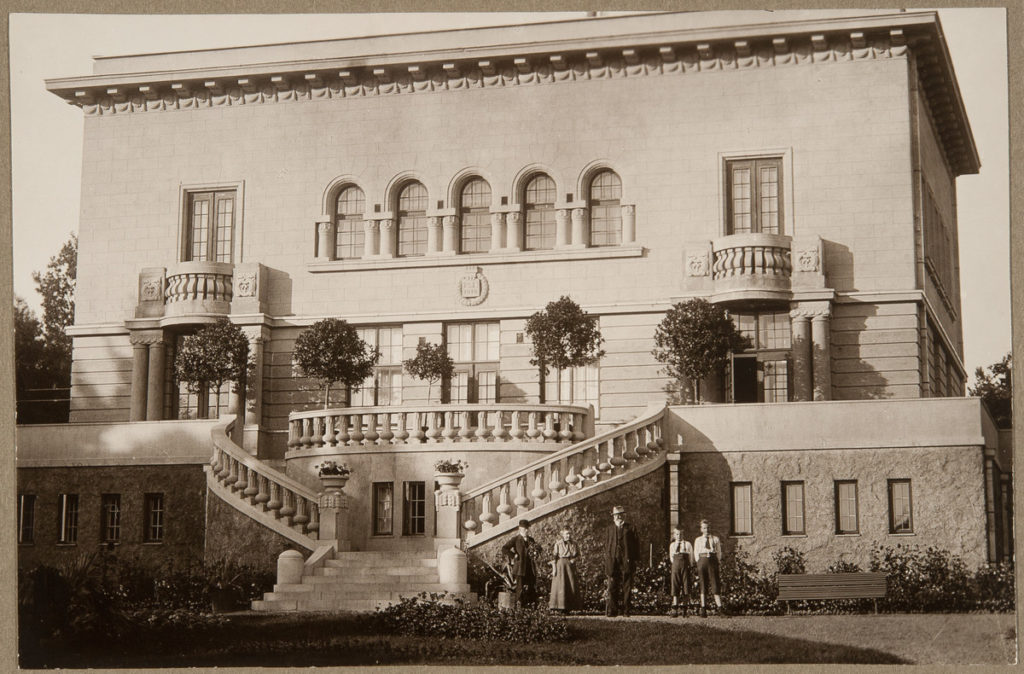
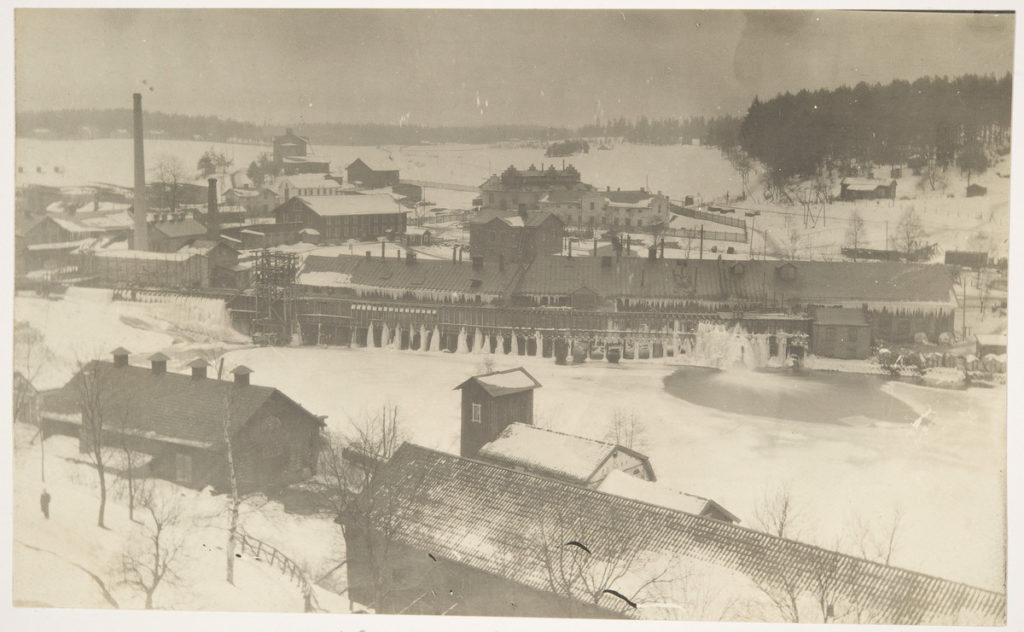
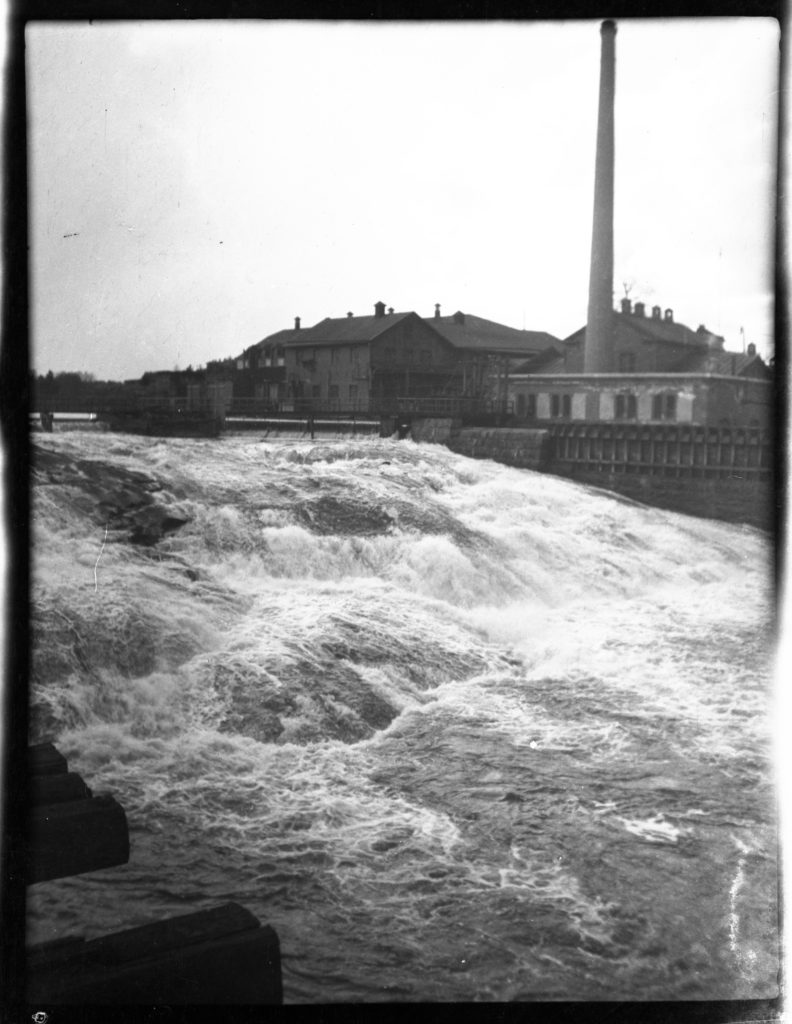
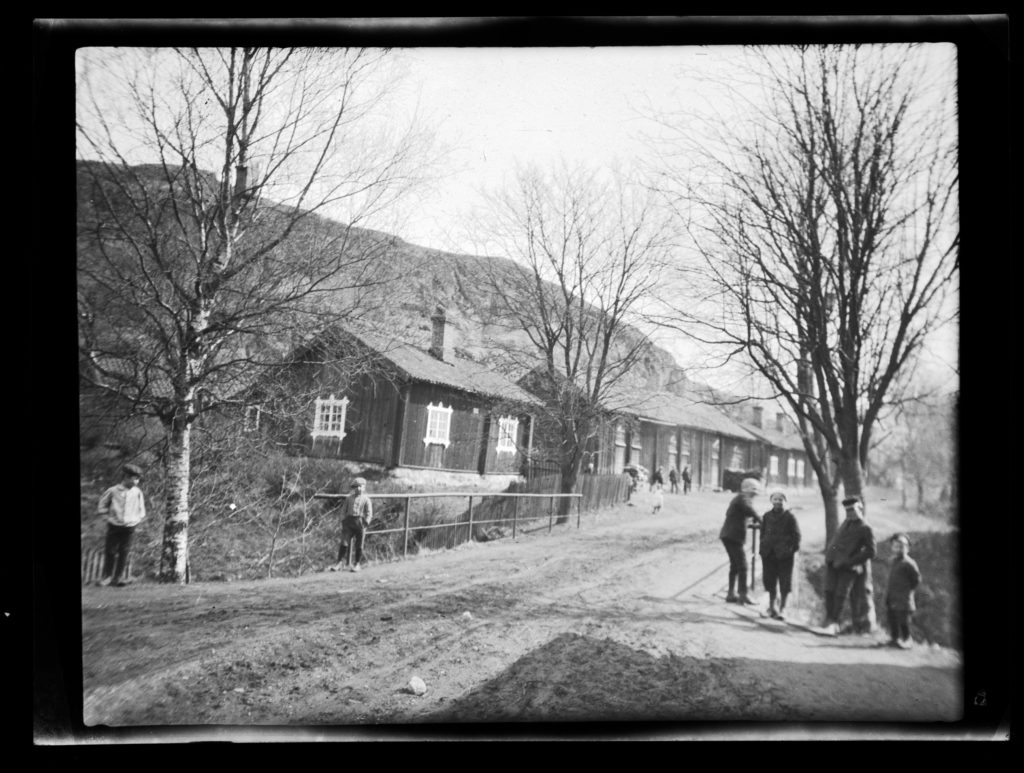
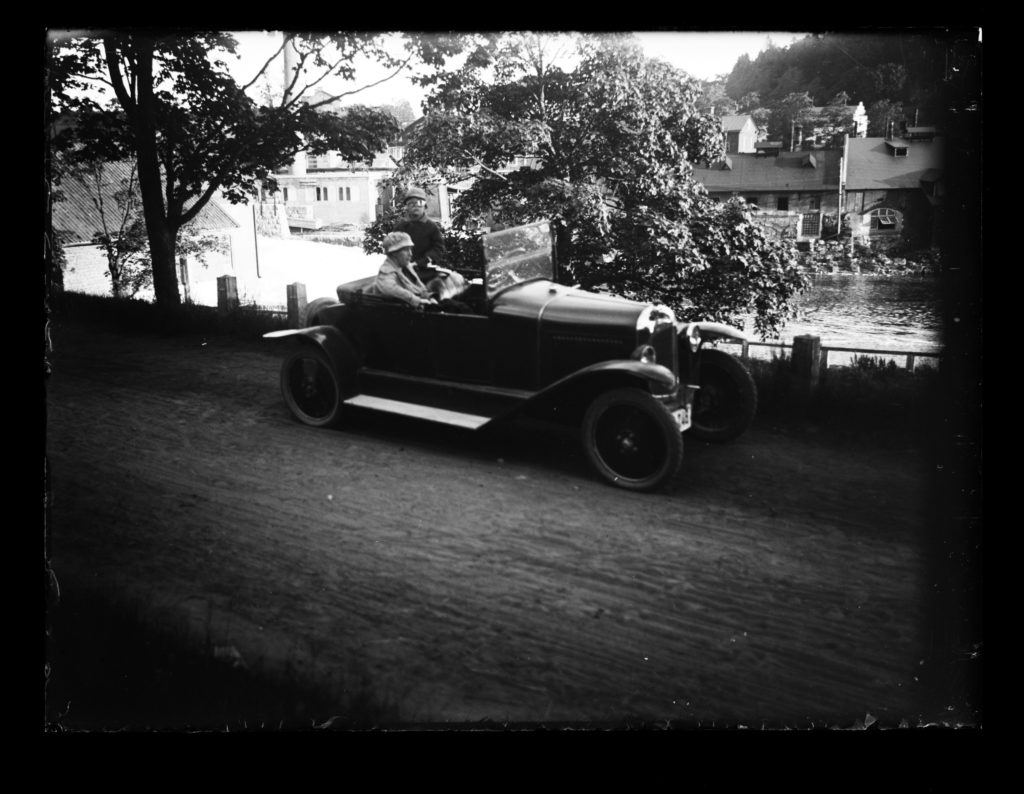
Billnäs on todella mielenkiintoinen kohde!